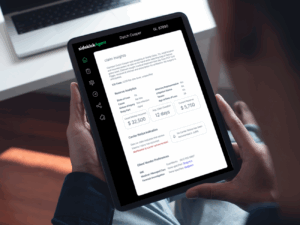March 30, 2023
Against the backdrop of a tight labor market and consumer expectations of instant gratification, many customers are eagerly looking for ways to bring greater efficiency to the claims process without sacrificing the end-user experience.
Oftentimes, automation — having technology tools perform tasks normally done by humans — is presumed to be the answer they’ve been seeking. While automation has much to offer the claims space, I often remind our clients, colleagues and business partners that it doesn’t have to be all or nothing.
It is unrealistic to think that today’s machines can handle complex claims from start to finish without any human intervention. However, strategically automating administrative components of claims adjudication (rather than the entire process) can offer the desired efficiency benefits while preserving the personal involvement of a trained professional.
Strategic opportunities
In response to customer demand and to optimize our workflows, Sedgwick has successfully employed automation technology in several areas of claim processing.
Eligibility confirmation: Before processing any claim, we must be sure that the person filing the claim is eligible for the benefits they’re requesting. We’re now able to automate this for certain programs and lines of business, thanks to our intelligent smart.ly platform and the use of application programming interfaces (APIs).
For example: A residential policyholder from one of our U.S. carrier clients enters information into smart.ly about storm-related damage to their home. Using an API to securely connect to our client’s systems, we can instantly validate the homeowner’s policy coverage. Then, smart.ly checks the Federal Emergency Management Agency (FEMA) database to confirm that the location was in a natural disaster zone on the date in question.
Expediting eligibility confirmation enables us to help policyholders faster; that’s especially important during a catastrophe, when people may need temporary housing, repairs or other forms of urgent assistance.
Rules-based decisioning: Using this automation tactic, we can combine multiple data points from a claim and factor them against a “truth table” to determine whether there are clear reasons to either approve or deny the request. Our talented people continue to conduct quality control, but we’ve found a very high level of reliability running certain types of claims — such as warranty or product recall — through a decision engine as part of the adjudication process.
Document validation: Many of the absence cases we handle are prompted by pregnancy. To activate their employer-provided leave benefits, employees must submit medical documentation regarding the pregnancy from their treating physician. As soon as an employee uploads their documents to smart.ly, artificial intelligence tools “read” them like a human being would — whether they’re saved in PDF, image or text-based format. In a matter of seconds, AI digitalizes the content and validates whether all required documentation has been provided.
This expedited process gives our clients’ employees instantaneous information and simple steps to follow at a time in their lives when they have far more important things on their minds.
Value calculations: Automation technology lies at the heart of our innovative solution for fast tracking low-complexity residential property claims.
A client’s policyholder who incurred relatively minor water damage to their home logs onto smart.ly and answers a series of targeted questions regarding their claim. Intuitive scripts prompt the policyholder to upload photos of the damage and provide the dimensions of the affected spaces via their mobile device. Smart.ly then uses the information submitted, the relevant policy language and an independent construction industry pricing database to calculate the value of the loss and propose a settlement amount within 24 hours! The policyholder can then accept the offer (which is validated by an adjuster prior to payment) and pursue restoration and repairs through our contractor network, or they can opt for further review by the appropriate claim specialist. (The current offering focuses on water damage, and we’re aiming to add wind and hail damage to the model in the near term.)
Our ability to automate value calculations enables insurers to process low-complexity residential claims at a fraction of the cost and in much less time than traditional handling methods; it also reduces the time it takes impacted homeowners to get claims resolved and get back to normal after a loss.
Building confidence in automation
While everyone is seeking to maximize efficiency, appetites for trusting automation and reducing human involvement in the claims process vary greatly by organization. As a service provider, we at Sedgwick must understand the culture of each client and their willingness to embrace these kinds of technology-driven solutions.
In my experience, there are two key elements to successfully implementing automation on a client’s program:
1. Data transparency and availability: We must be able to powerfully demonstrate which aspects of automation are highly reliable and working well for a program and which need to be tweaked further. We cannot and should not expect savvy clients to simply take our word for it.
2. True partnership: The implementation of automation always works best when the client is heavily engaged in the experimentation process. This helps us gauge their openness to these innovative solutions and where it’s best to maintain human involvement in the handling of their claims.
Finally, it’s important to note that automation is not the right solution to every claim challenge. Incidents involving bodily injury, large-value losses and high complexity, to name a few, are not the best places to apply these tactics. Organizations and service providers must also recognize the emotional attachments that various scenarios entail in order to determine how to balance the perks of efficiency with the irreplaceability of the human touch.
> Learn more — read about Sedgwick’s people first, tech forward and data driven digital experience
Tags: adjusters Adjusting AI AI technology Artificial Intelligence automation claims process Consumer Consumer experience consumers Data data model Digital journey Document validation empowering performance injury partnership People first Property Rules-based decisioning strategy Technological advances Technology Value calculations



